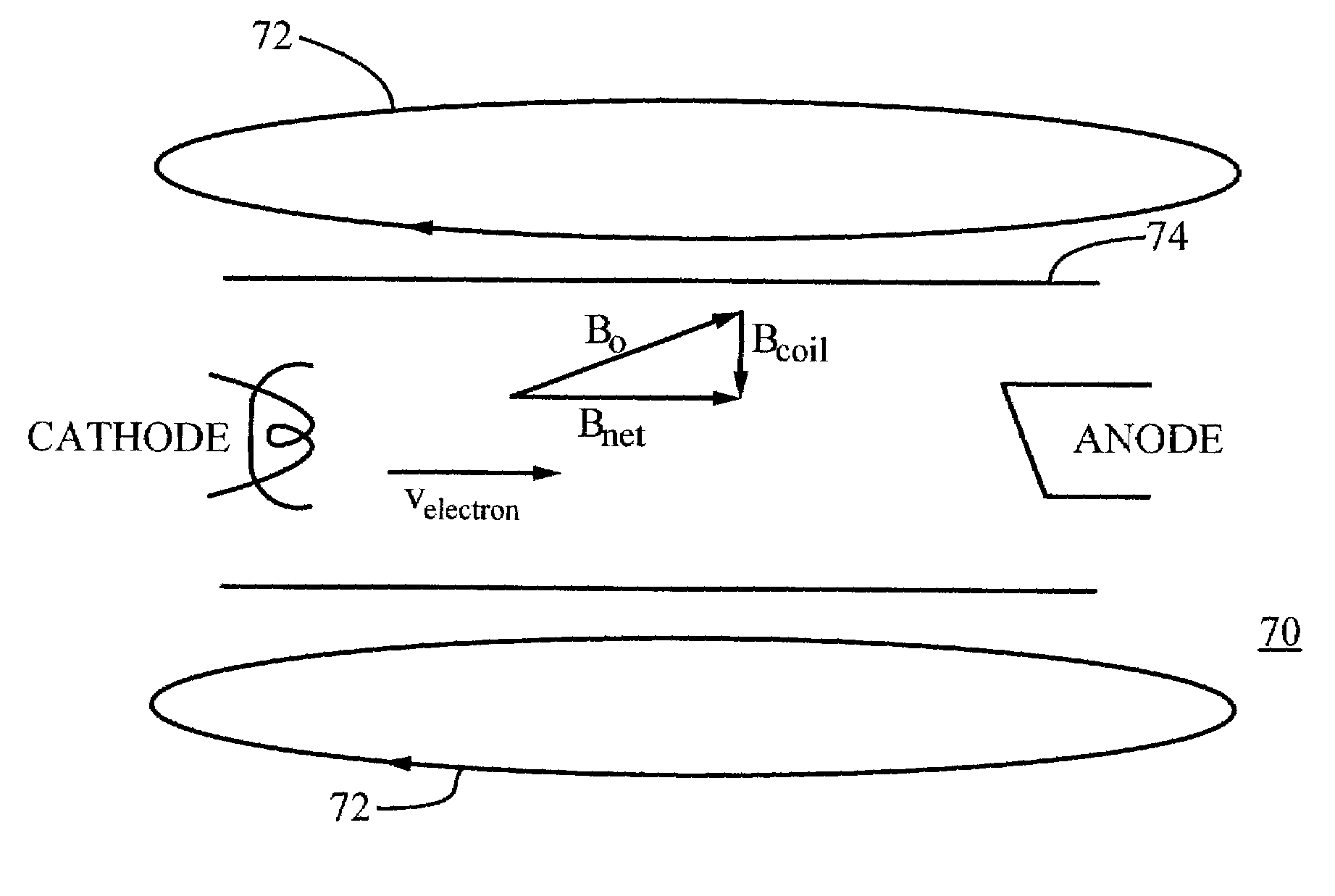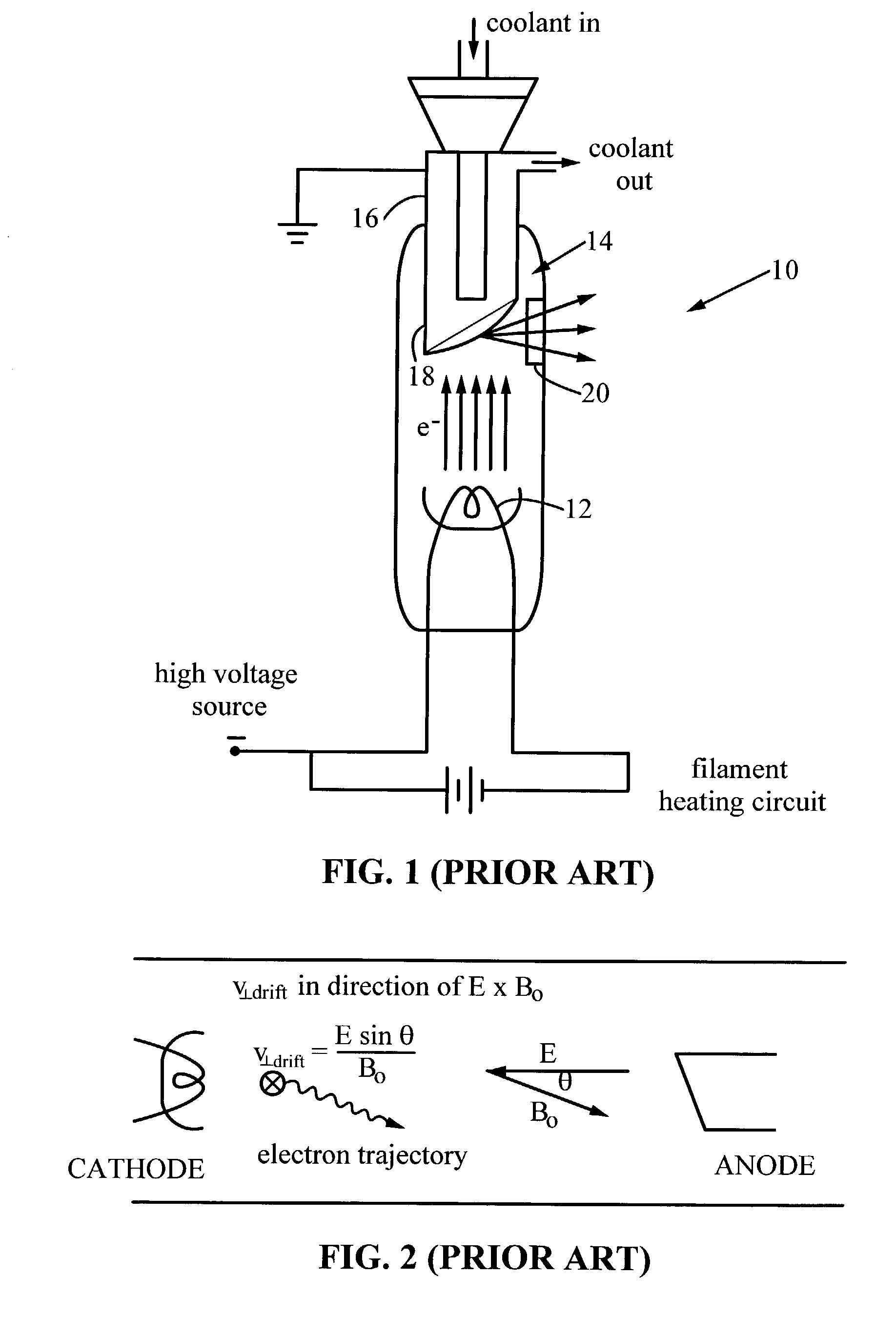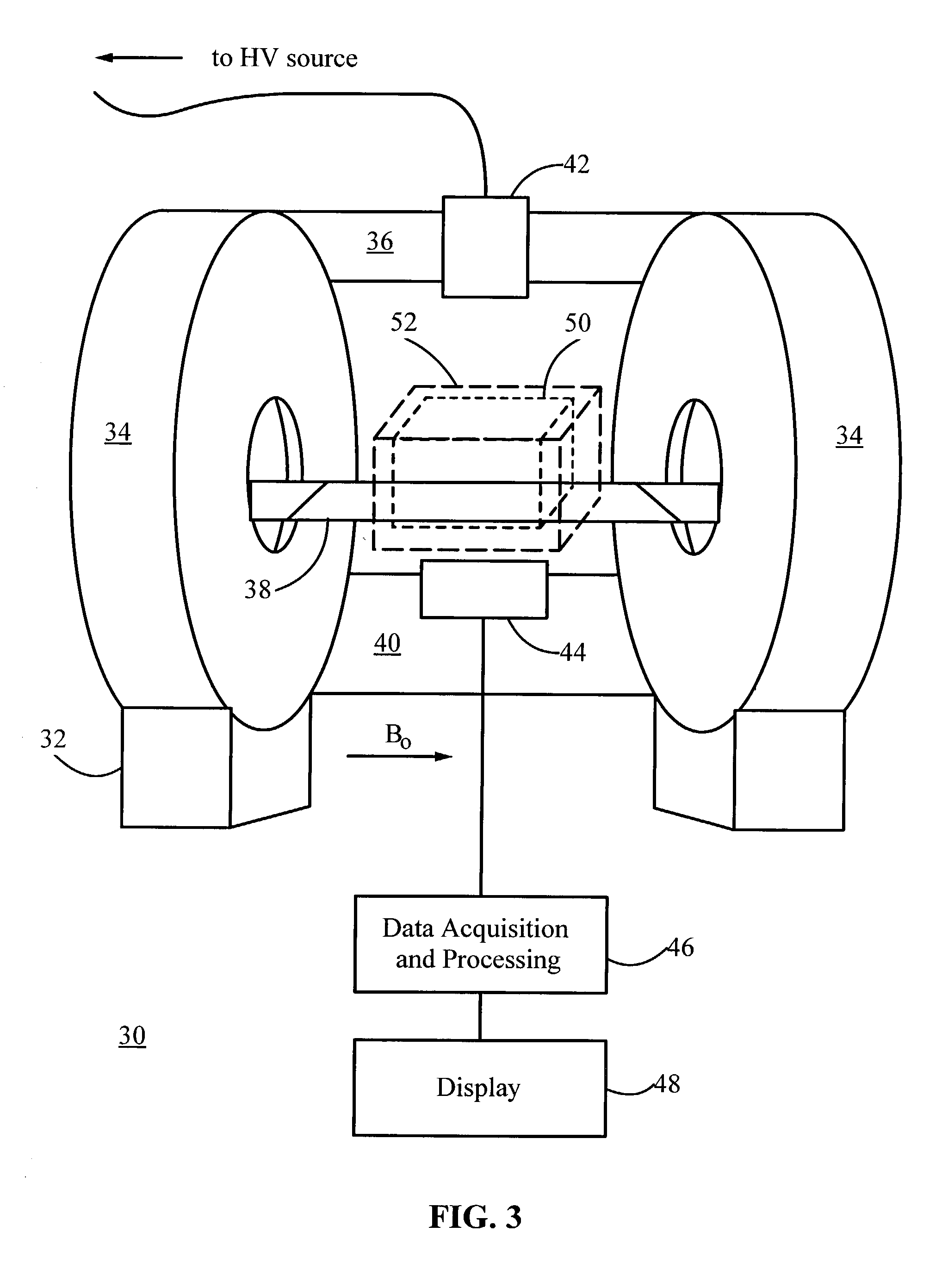Maintaining the alignment of electric and magnetic fields in an x-ray tube operated in a magnetic field
a magnetic field and x-ray tube technology, applied in the field of imaging systems, can solve the problems of inability to use the mri system, inability to move the patient, inconsistent images,
- Summary
- Abstract
- Description
- Claims
- Application Information
AI Technical Summary
Benefits of technology
Problems solved by technology
Method used
Image
Examples
Embodiment Construction
[0023]Although the following detailed description contains many specifics for the purposes of illustration, anyone of ordinary skill in the art will appreciate that many variations and alterations to the following details are within the scope of the invention. Accordingly, the following embodiments of the invention are set forth without any loss of generality to, and without imposing limitations upon, the claimed invention.
[0024]The present invention provides a combined magnetic resonance imaging (MRI) and x-ray fluoroscopic imaging apparatus and method. Ideally, the two imaging systems have substantially coincident fields of view (FOV). This allows both types of images to be acquired without moving the object being imaged (e.g., a patient). The invention is particularly advantageous for image-guided interventional procedures, in which x-ray imaging guides placement of guidewires, catheters, or stents, while MR imaging provides soft tissue contrast. Conventional individual systems a...
PUM
 Login to View More
Login to View More Abstract
Description
Claims
Application Information
 Login to View More
Login to View More - R&D
- Intellectual Property
- Life Sciences
- Materials
- Tech Scout
- Unparalleled Data Quality
- Higher Quality Content
- 60% Fewer Hallucinations
Browse by: Latest US Patents, China's latest patents, Technical Efficacy Thesaurus, Application Domain, Technology Topic, Popular Technical Reports.
© 2025 PatSnap. All rights reserved.Legal|Privacy policy|Modern Slavery Act Transparency Statement|Sitemap|About US| Contact US: help@patsnap.com



